


Impressive waterfalls, black sand beaches, sea stacks and arches, a 100 metre deep canyon and basalt columns - spectacular sights in the south of Iceland.
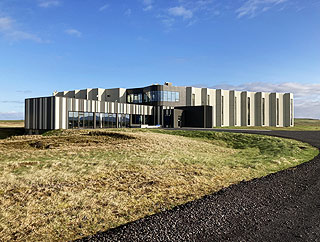
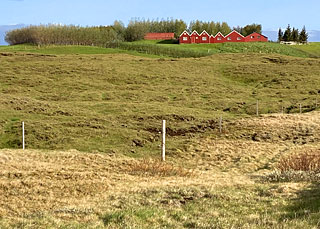
The Landhotel we were staying at was in a remote location north of Hella, comfortable, with a decent restaurant where we had very good fillet of lamb, followed by sorbets for Andrew - passion fruit, blackberry, and ginger, and hot lava cake for me - known to the rest of the world as melting chocolate pudding, with vanilla ice cream and blueberries.

The next day we woke to a glorious morning, so lovely we went for a walk before breakfast.
We headed for Seljalandsfoss, whose claim to fame is the path that goes behind the waterfall. Like all the other waterfalls we saw, this one was in full spate due the the month of rain that had preceded our visit.


The main fall tumbles over a cliff which stretches to the north with smaller falls along its length.
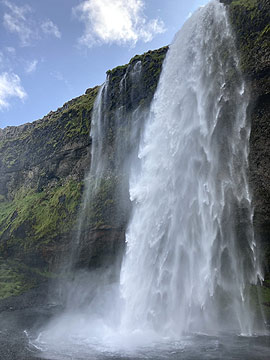



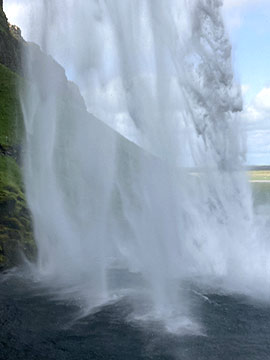
It's quite difficult underfoot, and the rocks are slippery, but it's worth the scramble.
On to Skogafoss!

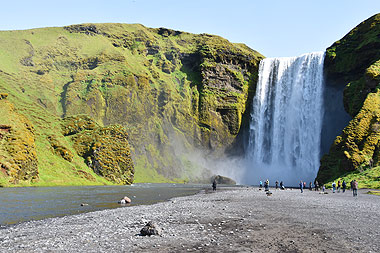
A 25m wide sheet of water barrelling over a cliff to drop 60m. Very beautiful. Wonderful rainbows in the spray at the base of Skogafoss.


The cliffs are ancient coastal cliffs formed by erosion at the end of the last ice age. Due to the weight of ice the land was a lot lower then. When the ice melted the land rose.

We climbed the 447 steps to the top of the waterfall but the best views really are at the bottom.



To the coast and Dyrholaey nature reserve which instantly became our favourite spot of the holiday so far. High on the cliffs you look down onto black beaches with crashing surf, sea stacks and rock arches.


We drove both lower and upper roads and walked along the edges of the cliffs for the views.

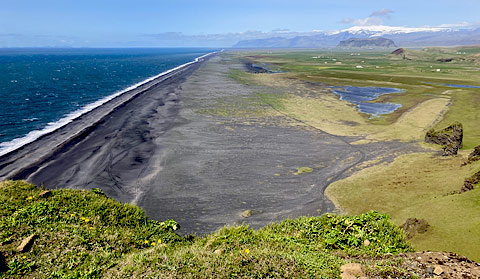
We walked from the car park on the upper road to the point where there is a lighthouse. It was incredibly windy.
The view west is stunning. Behind a long black beach the flat landscape, dotted with farms and rocky masses, with the remains of volcanic eruptions in the form of tuff mountains, stretches back to the mountains and glaciers. It is quintessential Iceland.
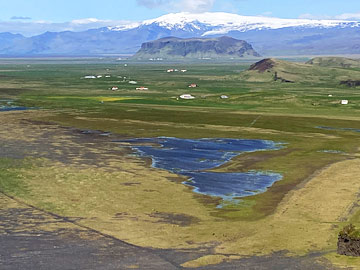
The nature reserve is home to many different types of birds including puffins, fulmars, Arctic terns and kittiwakes, and there were a lot nesting on the cliffs.



There were a lot of restrictions on where you could walk because of all the ground-nesting birds.

Reynisfjara black sand beach is close to Dyrholaey, east along the coast. Reynisdrangar is the name given to the impressive sea stacks here.
 .
.



Equally impressive are the incredible basalt columns in the cliffs, formed during the cooling of lava flowing from a volcanic eruption.




We had very good cod and chips at the bistro back of the garage on Vic before heading to Fjadrargljufur. We travelled across a vast lava field, covered in moss, between Vic and the canyon. It is the biggest lava field in Iceland, Eldhraun, at 565 sq km and was formed in 1783/1784 when the Laki fissure and Grímsvötn volcano erupted in one of the biggest eruptions since the Ice Age.1 The lava field appears green due to the moss covering the rocks.

Fjadrargljufur is a beautiful, narrow rock canyon about 100 metres deep and a little over 1km long. The bedrock is believed to be about 2 million years old while the canyon itself formed 9,000 years ago as the glacier retreated. The river Fjadra flows through the canyon to join the Skafta river.


The walk along the rim of the canyon is fenced off from much of the surrounding landscape to avoid walkers disturbing the nesting birds.
The canyon saves the best for last - a series of waterfalls dropping steeply down the rock faces.
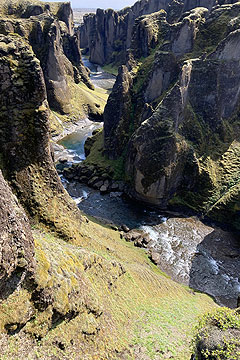

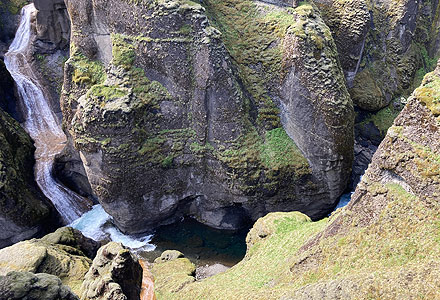
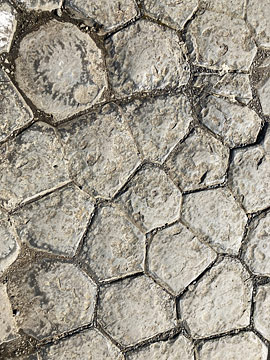
Kirkjugolfid is an eroded basalt columnar outcrop so that the cross-section of the columns can be clearly seen. The basalt columns always stand perpendicular to the cooling surface so are vertical in lava flows, horizontal in tunnels. There is no clear reason why Kirkjugolfid has come to be known as the "church floor".




The feature is set in lovely meadows with rocky hills to one side.

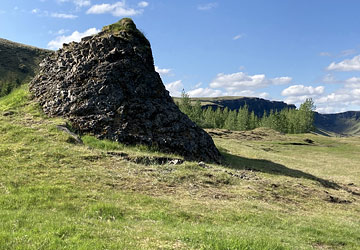
There is also a small burial site here, "Hildir's Grave Mound". An information board relates that the first inhabitants here were Irish hermits and heathens were forbidden to settle. The Christian Ketill is said to have lived here all his life but when the pagan Hildir Eysteinsson planned to move here "he fell down dead as soon as he set foot on the estate and is buried in Hildishaugur".